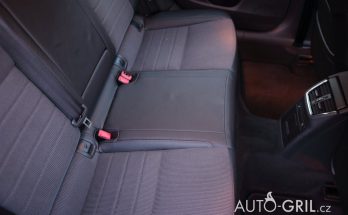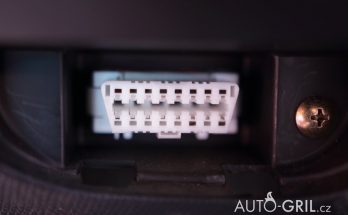Bearings are an integral part of every car. It is also a part that can be quite heavily stressed. Of course, a proper replacement is essential if a problem occurs. In this regard, we will therefore look at how the replacement of the rear wheel bearing will take place. It can be said that it is identical for a whole range of vehicles and the procedure is more or less very similar.
If there is a problem with the bearing, we can identify it quite simply. While driving, we hear a noise from the rear wheel. This can usually change depending on how the car is specifically tilted. If you also have the problem, you also need to find out which bearing is faulty. It can either be estimated by listening, or it is possible to lift the car. Either on a classic jack or using a lever. After that, you just turn the wheel and you should not only feel more play in the faulty bearing, but you will certainly also hear non-standard sounds. At that point you will identify exactly where the problem is.
Preparing the car
As soon as we know exactly on which wheel the bearing is bad, we can start the replacement itself. This is mainly related to the initial preparation of the car. That is, the procedure associated with the fact that we should lift and secure the car. The classic jack is ideal, which is the best option we can do. If we don’t have it available, a hever can be enough. Here, however, we are really thinking about ensuring that the car is well supported and secured and that it does not fall from the jack or mats.
Once we have the car ready for the exchange itself, there is no need to remind you that the first necessary step is to remove the wheel. This is a classic procedure, fully identical to when we classically change tires to a summer model, or vice versa to a winter model. Once the tire is removed, it is possible to continue further, to the drum.
Removing the drum
The wheel is gone and so we have free access to the most important part, i.e. the drum itself. Here the procedure is also clearly given and it starts with the fact that we must first remove the cover itself, which is located in the center of the drum itself. As soon as the cap is gone, we have full free access to the nut. We also have to dismantle this, as it is precisely thanks to it that the brake drum is held in place. It may happen that the nuts may not loosen completely without problems. In such a case, it is of course necessary to think about various sprays that will ensure the clearance or elimination of rust. We also have to think about the fact that we cannot do without more power.
If this central and main nut is removed, it is possible to do another, i.e. the following step, which is related to the actual removal of the brake drum. After this step, we are already at the part itself that needs to be replaced. We are already at the given bearing, which is defective.
Removing the bearing
Once the drum itself is removed, we can also remove the bearing itself. If there is something that we should definitely not forget, it is definitely the necessity to first remove the locking ring itself. Only after removing it can the bearing be removed, i.e. pressed out. In most cases, repair is not possible, so the bearing can be thrown away.
Instead of the original bearing, it is ideal to insert a completely new bearing. Its price is not great, and in addition, there is no need to worry about how long a used bearing would last if we were interested in using this particular one. It is also clear that when replacing the bearing, we should have the new one fully prepared.
Preparing the bed
Once the bearing is gone, the bed itself needs to be prepared to accommodate the new bearing. This procedure is not complicated, as the bed must first be thoroughly cleaned so that there are no impurities. Once it is done, it is possible to start the second step, which is the need to sufficiently lubricate the bed. Engine oil or any other lubricant can help here. Of course, it should always be a clean lubricant.
We will also need this when we have the new bearing ready. And for the reason that it itself needs to be lubricated. And that mainly with regard to the outer ring. If this is also done, we are ready for the most important phase of the exchange itself.
We insert a new bearing
The procedure is not complicated and basically it is the opposite procedure than when we wanted to remove the bearing. In this case, we put it in the bed itself. We so-called press it. Let’s not forget the securing ring, which is an essential part. With this step, we are sure that the new bearing is already in its right place, which for us means that the replacement is coming to an end.
If the bearing is secured by a so-called safety lock, at this moment we have the certainty associated with the fact that everything is done and we can start the step by which the drum itself is put back in its place. Once it is where it should be, we take the nut again and firmly mount the drum. At this stage, due care must be taken to ensure that it is properly secured.
Last edits
If the drum is firmly in place, there is only one final step left, which is to tap the cover itself. If everything is in order, it is enough to take the bike itself, which we will put in the appropriate place. Tighten the screws sufficiently. If they are firmly in place, we can simply turn them around. Any non-standard sound, as well as any scrubbing should be a thing of the past.
At this moment, the last step awaits us, which is nothing more than the final exam. We go for a drive with the car and while driving we listen to see if any noise that bothered us in the past is gone. If so, we are sure that the bearing replacement went exactly as it was supposed to. The car is therefore ready for full, problem-free operation again.



